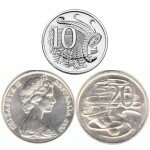The production of hemp (Cannabis sativa) was one of the prime motivators for the Anglo – European colonisation of the continent that became known as Australia.
Britain’s economy and security was almost entirely dependent on the traditional hemp plant, Cannabis sativa. At the end of the middle ages, improved ship design and sail configurations required stronger sails.
Hemp was the strongest natural fibre known to man. By using Cannabis, the strongest sails could be made for longer voyages.
At the end of the middle ages Europeans were crossing the oceans instead of clinging to the coasts in search of wealth, converts and new knowledge. The strong sails employed to drive this expanding economy were named after the plant they were made from – Canvas – the Dutch pronunciation of the word Cannabis.Canvas from canevas from Latin cannabis hemp, from Greek Kannabis – more at hemp~Websters Third New International Dictionary

Cannabis was as important to the economy of the Age of Exploration as fossil fuel oil is to the economy of the military industrial complex of the western world today.
Furthermore, Cannabis retained its importance as a strategic raw material for over 400 years, until the development of steam shipping in the mid to late nineteenth century.

Sir Joseph gave a bag of hemp seeds as a gift to the First Fleet in 1788. A letter recieved by Joseph Banks from the East India Company in 1801 shows that he was still handing out bags of hemp seeds in the Australian colonies 13 years later.
Read more at; http://australianhempparty.com/general/cannabis/colonial-history













